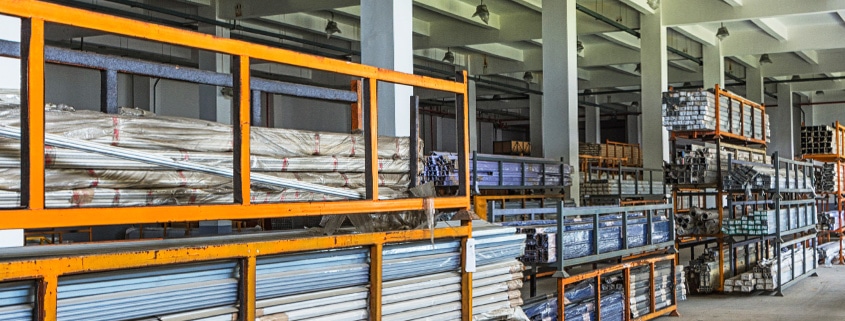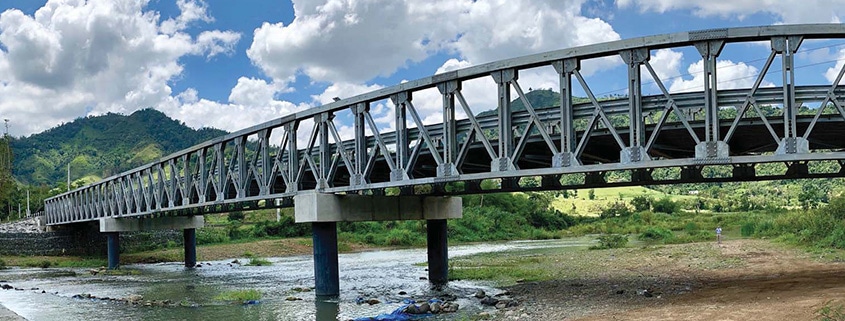Galvanizing steel is the process of submerging steel in a bath of molten zinc which creates a protective layer that prevents future corrosion. Rust is potentially dangerous and can cause metal parts to become stiff and weaken the integrity of the metal and thus the structure.
Repairing deteriorated steel bridges after decades of use is time-consuming, expensive, and difficult to keep up with.
Hot-dip galvanization for steel not only protects metals from corrosion but also improves maintenance-free longevity. Thus, in the long run, businesses are saving money by keeping their steel galvanized and protected. In addition, the galvanization process is environmentally-friendly and resistant to conditions.
Galvanizing Steel: Three Main Steps
Step 1: Surface Preparation
The first and most crucial step is preparing the surface of the material for the coating process. Zinc will not react to unclean metal, so a successful surface prep is a must. Preparing the steel begins by removing all the dirt, grease, and other contaminants from the metal surface. This method is completed by degreasing the metal in a hot alkali solution or other acidic baths.
Pickling
Then the steel material is pickled through a diluted acidic solution for the removal of mill scales and any rust buildup. Depending on the company, this process is either replaced with or accompanied by abrasive cleanings, such as air blasting sand or metallic shot.
Fluxing
The final process for surface prep is fluxing. This procedure eliminates oxides while simultaneously creating a protective coating for the prevention of the formation of any additional oxides.
Step 2: Galvanizing Steel
After the surface of the metal has been prepped, it’s submerged in a large bath of 98% pure molten zinc at 830° F. The zinc reacts to the clean metal and generates a protective layer.
When the steel has reached the same temperature as the zinc bath, it is then withdrawn, drained, and cooled off before moving to the final step. Depending on the size and thickness of the material, this process could take up to 10 minutes or less.
Post-Treatment
It’s possible that a post-treatment coating will be applied to the metal. This process is called quenching. The steel is dipped in mostly water and some chemicals to create a protective layer. Frequently, finishing steps will include grinding off zinc drips for a smooth finish.
Step 3: Inspection
During the inspection phase, the coating thickness, weight, and appearance is meticulously analyzed and compared against the ASTM Standards. There are two different procedures that can be performed to measure the coating’s level of thickness: magnetic gauges or optical microscopy. Magnetic thickness gauge is the most simple and non-destructive thus making it the most popular method.
Analyzing Coating Weight
The second element that is analyzed is the material’s coating weight. The coating weight refers to the volume of zinc coating on the metal surface. Like the coating thickness inspection process, coating weight has two different methods for measuring the weight. Both the weigh-galvanize-weigh and the weigh-strip-weigh procedure should only be applied to single specimen inspection. These methods have their pros and cons so it’s important to choose the procedure that works best for you.
Final Galvanizing Steel Step
The last component that is inspected is the steel’s appearance and coating finish. All sections of the material are inspected to ensure that it meets the proper standards. As mentioned before, zinc will not react to unclean metal. Thus, the steel’s appearance and finish provides useful information such as revealing any errors that occurred during the galvanization process.
U.S. Bridge is a Certified Steel Fabricator
U.S. Bridge has been serving communities for more than 80 years, building steel bridges that withstand time. We’re a steel fabricator by the AISC for Certified Bridge Fabrication — Advanced (Major) and continue to be a leader in the American steel industry.
Still unsure if galvanizing steel is the right step for your bridge construction? Check our other blogs on the galvanization process and construction services for more information. Contact us today and let’s talk about how we can make your bridge project a long-lasting success.


